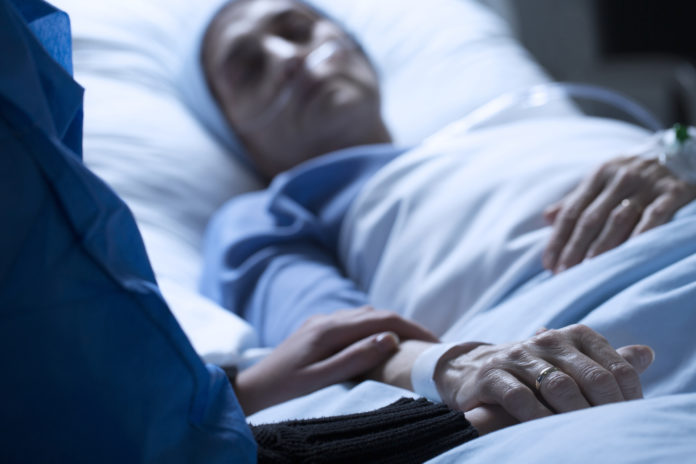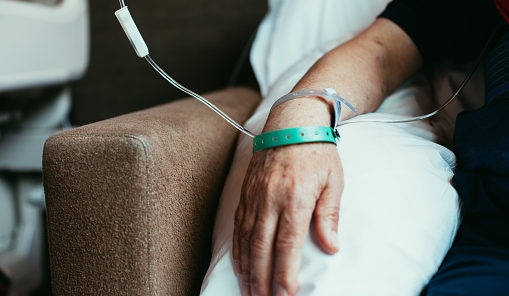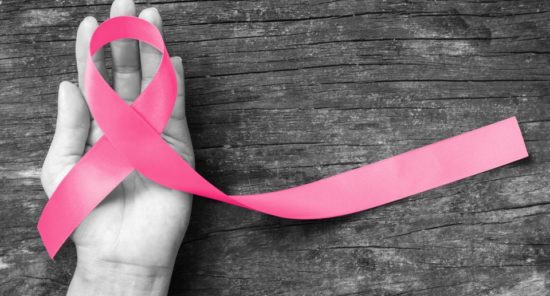A study of patients aged ≥60 years with lymphoma found that a high-dose chemotherapy regimen followed by autologous hematopoietic cell transplantation (AHCT), while feasible, was associated with significant toxicity. This study was published in Blood Advances.
“In patients who are ≥70 years of age, evidence to support high-dose chemotherapy followed by AHCT is limited because of concerns about the greater toxicity and mortality in this age group,” wrote the study authors. “Therefore, it is essential to understand the risks and toxicities of [this regimen] in older patients before withholding this potentially curative therapy from this age group who account for a large fraction of lymphoma cases.”
High-Dose Chemotherapy in Patients Aged ≥60 Years
For this study, the investigators assessed the toxicities associated with BEAM (carmustine, etoposide, cytarabine, and melphalan), a commonly used preparatory regimen for AHCT in lymphoma. In total, 346 patients were stratified by age: 279 patients aged 60–69 years and 67 patients aged ≥70 years. Two-thirds of the cohort were male. Diagnoses included diffuse large B cell lymphoma (39.3%), mantle cell lymphoma (34.4%), T cell non-Hodgkin lymphoma (17.6%) follicular lymphoma (6.1%) and other lymphoma subtypes in 2.6%. Upfront AHCT was performed in 51.7% of patients. More than half (54.6%) of patients had received ≥2 prior lines of therapy, and 10.47% had received prior radiation therapy. The two age groups were comparable in terms of histologic distribution, prior lines of therapy, and remission status. The median follow-up time was 6.55 years.
All patients in the older cohort had at least one grade ≥3 toxicity, with a median of three per patient. In the younger cohort, median toxicity per patient was two, and 8% did not experience any grade ≥3 toxicities.
In total, 874 grade ≥3 toxicities were observed in 346 patients. Most of these toxicities (89%) occurred within the first 30 days post-AHCT. The most common toxicities were febrile neutropenia (63%), oral/gastrointestinal (51%), infection (31%), and cardiovascular (29%). Mucositis and enterocolitis/diarrhea were the most common oral/GI toxicities. Bloodstream bacterial infections and pneumonia were the most common infections. Syncope, arrhythmia, and hypertension were the most common cardiovascular toxicities.
Significant Toxicity Burden among the Oldest Patients
The overall risk of toxicities was higher among the older cohort, particularly risk of cardiovascular (hazard ratio [HR], 3.36; 95% confidence interval [CI], 2.25–5.00; P<0.001) and skin toxicities (HR, 2.45; 95% CI, 1.08–5.54; P = 0.032). This risk was still elevated even after adjusting for baseline cardiac risk factors. The amount of prior lines of therapy was not associated with risk of cardiovascular toxicity.
The median progression-free survival and overall survival of the entire cohort were 8.32 years (95% CI, 6.10–13.22) and 10.45 years (95% CI, 8.24–13.22), respectively. Nonrelapse mortality at 100 days was 2.99% (95% CI, 0.55-9.32) in the older group, compared with 1.79% (95% CI, 0.68–3.92) in the younger cohort. After two years, nonrelapse mortality in the older and younger cohorts were 6.2% (95% CI, 1.97–13.95) versus 2.91% (95% CI, 1.37–5.42), respectively. Adjustment for the number of grade ≥3 toxicities within 100 days found that patients aged older ≥70 years had a 1.71-fold (95% CI, 1.08–2.71) increased risk for progression or death compared to younger patients.
The authors concluded, “Within this cohort of elderly patients with NHL undergoing BEAM-AHCT with extended follow-up, we demonstrate feasibility and efficacy in patients as old as 77 years of age, but with a high toxicity burden. Although these results support the use of HDT-AHCT in the older population overall, interventions to minimize toxicities while maintaining efficacy, especially in patients older than 70 years, are crucial.”
Credit: Original article published here.










